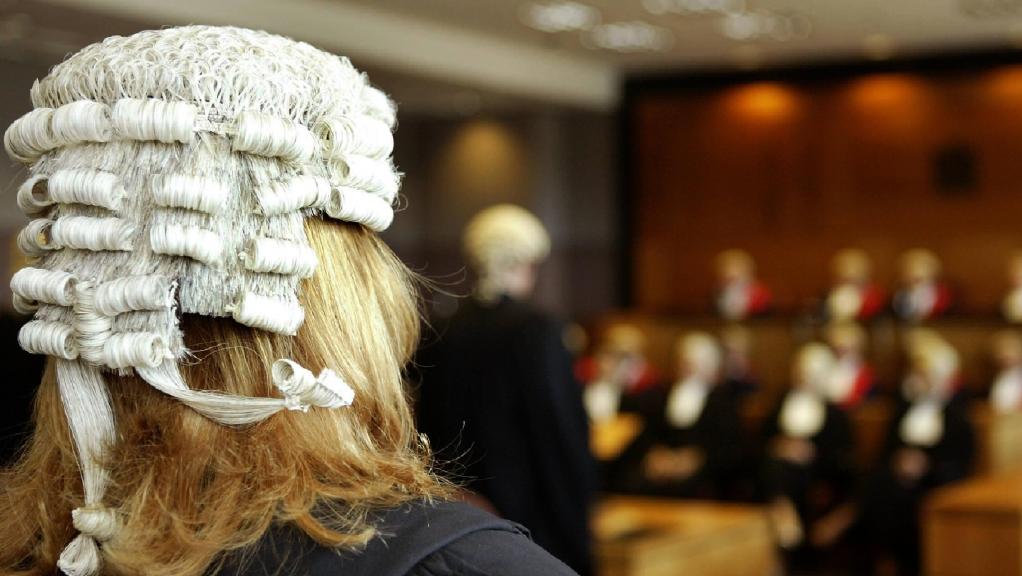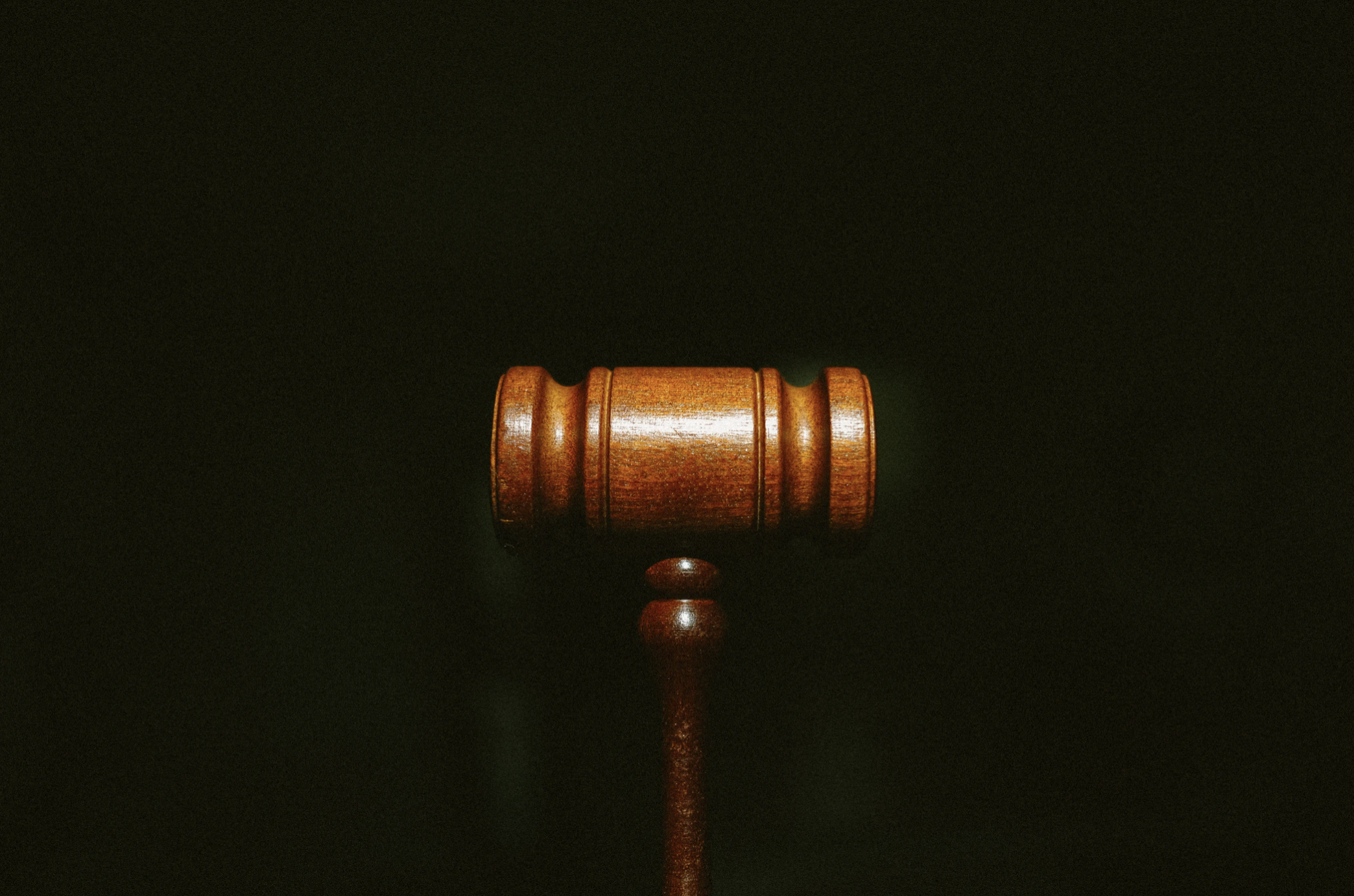Legal
R v Lawrance: The Right Development for Consent?

Introduction
On 23 July 2020, the Criminal Division of the Court of Appeal returned its judgment in the case of Lawrance, which simply answered whether a lie about fertility could negate consent and therefore turn sexual intercourse into an act of rape.
Facts
Previous History and Convictions
The Appellant in this case, Jason Lawrance, is a serial rapist who in 2016 had been convicted and given a life sentence with a minimum custodial term of twelve and a half years for raping five women, attempting to rape another and sexually assaulting one woman from 2011–2014.
In July 2019, the Appellant was found guilty by a jury at Nottingham Crown Court for five further charges of rape, one further charge of sexual assault and one charge of assault by penetration.
Fertility Deceit
Two of the charges of rape for which the Appellant was convicted of in July 2019[1], occurred in July 2014 after the Appellant met a woman[2] on a dating website. After meeting on the dating website, the Appellant and Complainant exchanged text messages which became sexually explicit and one conversation led to the Complainant speaking of a previous sexual encounter. The Appellant asked if the male in the Complainant’s previous sexual encounter used a condom to which the Complainant responded that he did not as “he had the snip years ago”, the Appellant responded to that with “so did I”. Nothing further was said about fertility or the Appellant’s apparent vasectomy.
On 21 July 2014, the Appellant and Complainant met in-person and spent the evening together before returning to the Complainant’s home and engaging in sexual intercourse twice. The Complainant’s evidence was that she sought assurances from the Appellant that he did have a vasectomy as she did not wish to become pregnant and that the Appellant assured her that he had.
The Appellant left during the night and during an exchange of messages in the morning said to the Complainant “I have a confession. I am still fertile. Sorry.” The Complainant then found out that she was pregnant and subsequently terminated that pregnancy.
The Prosecution’s case in July 2019 Trial was that the Appellant’s lie about having a vasectomy vitiated the Complainant’s consent and that even if the Appellant did reasonably believe in consent then that belief would not be reasonable.
Whilst the Appellant did not give evidence during the July 2019 Trial, his defence was that of consent and that there was no discussion about the Appellant’s apparent vasectomy in the Complainant’s bedroom. The Court of Appeal noted that the jury must have accepted the Complainant’s account[3].
Application to Dismiss
Prior to the arraignment for these charges, the Appellant made an application to dismiss these two counts of rape on the basis that a lie about fertility cannot vitiate consent as a matter of law. It was submitted by the Appellant that –
- Not all deceptions leading to an individual consenting in sexual intercourse are sufficient to negate consent.
- Assange v Swedish Prosecution Authority[4], and R (F) v DPP[5] were distinguishable. The Appellant submitted that deceit as to fertility would not be sufficient to negate consent as in Assange[6] and R (F)[7]consent was given on the basis that ejaculate would be prevented from entering the Complainant’s vaginas, whereas in this case this was not what was sought to be avoided. Further, the Appellant relied upon R v B[8]where the Appellant in that case omitted being HIV+ and that omission did not vitiate consent.
The Prosecution, in response to the application, submitted:
- There was a material distinction between the present case and R v B as this case dealt with a positive deception as opposed to an omission.
- There was no material difference between the position of the Complainants in Assange and R (F) who both sought to avoid the risks of pregnancy, and this case, where the consent to unprotected sexual intercourse was conditional upon the Appellant’s infertility and there being no risk of pregnancy.
The Judge, upon hearing the above submissions, ruled:
- If the jury accepted the evidence of the Complainant, the Appellant’s deceit would be capable of negating her consent.
- This case could be distinguished from R v B as that case concerned an omission to disclose HIV status as opposed to a positive representation. The Prosecution case is that the Appellant made a positive representation that he was infertile, relied upon by the Complainant. Further, the Appellant’s deceit as to fertility was sufficiently closely connected to the act of sexual intercourse as to be capable of negating consent.
- The distinction between this case and Assange and R (F) was of marginal relevance when the primary purpose of contraception – of any form – is to prevent pregnancy. The reason why the complainant consented to unprotected sexual intercourse was because she believed there was no risk of pregnancy.
Judge’s Summing Up
After the evidence in the July 2019 Trial had been heard, the Judge summed up the legal elements of the offence of rape and outlined the statutory definition of consent – as outlined below. He further directed the jury in relation to the difference between submission and consent[9].
The Judge further crafted a route to verdict which he gave to the jury. He directed the jury to ask themselves the following questions:
- Whether they were sure that the Appellant falsely represented to the Complainant that he had had a vasectomy. If yes:
- Whether they were sure that she did not consent to the Appellant penetrating her vagina with his penis because she relied upon that false representation and would not otherwise have agreed to be penetrated by him. If yes:
- Whether they were sure that the Appellant did not reasonably believe that she consented to him penetrating her vagina with his penis.
The Law
Before looking further into the Court of Appeal’s decision, it is first important to understand the existing law surrounding rape and consent which is contained below, insofar as relevant.
The offence of rape is contained in Section 1 of the Sexual Offences Act 2003[10] –
- A person (A) commits an offence if –
- He intentionally penetrates the vagina, anus or mouth of another person (B) with his penis,
- B does not consent to the penetration, and
- A does not reasonably believe that B consents.
- Whether a belief is reasonable is to be determined having regard to all the circumstances, including any steps A has taken to ascertain whether B consents.
- Sections 75 and 76 apply to an offence under this section.
- A person guilty of an offence under this section is liable, on conviction on indictment, to imprisonment for life.
Section 74 of the 2003 Act holds the definition of consent –
“For the purposes of this part, a person consents if he agrees by choice, and has the freedom and capacity to make that choice.”
Sections 75 and 76 are concerned with a series of evidential presumptions and conclusive presumptions about consent respectively. Section 76 is the applicable Section in this case as the offence was dealing with deceit.
- If in proceedings for an offence to which this section applies it is proved that the defendant did the relevant act and that any of the circumstances specified in subsection (2) existed, it is to be conclusively presumed –
- That the Complainant did not consent to the relevant act, and
- That the Defendant did not believe that the Complainant consented to the relevant act.
- The circumstances are that –
- The Defendant intentionally deceived the Complainant as to the nature or purpose of the relevant act;
- …
The above law is set out clearly and was explained to the jury during the July 2019 Trial. The Appellant was convicted under Section 1 of the 2003 Act as it was found that the Appellant intentionally deceived the Complainant as to the nature or purpose of the relevant act by putting forward a positive representation about having a vasectomy which negated the Complainant’s consent as the Complainant did not have the “freedom and capacity” to consent.
The question put before the Court of Appeal in April 2020 was whether the Appellant’s deceit really did negate the consent given by the Complainant.
The Appeal
Grounds of Appeal
The Appellant appealed his convictions, submitting that the two convictions for rape are unsafe, because:
- There was no evidence upon which a jury could be sure that the offence of rape had taken place and the Judge should therefore have acceded to the defence submission that there was no case to answer, and;
- The Judge misdirected the jury about what they needed to be sure about before they could convict the Appellant.
Submissions on Behalf of the Appellant: Ground One
Before the Court of Appeal, it was submitted by the Appellant that:
- The deception in the current case is not one that goes to the nature of the sexual act or is closely connected to the sexual act and therefore capable of vitiating consent. The Appellant applied the test in R (Monica) v Director of Public Prosecutions[11] and submitted that the deception in this case went not to the physical act itself but to the quality of the ejaculate and the potential consequences and risks associated with it and was therefore not so closely connected to the performance of the sexual act that it was capable of vitiating consent.
- The Judge fell into error in deciding that the deceit in Assange and R (F) was not materially different from the present case as in the present case the Complainant consented to every aspect of the physical act whereas in Assange and R (F) the Complainant’s sought to prevent ejaculation into their vaginas, which was part of the physical act. Further, the Judge was wrong to distinguish the present case and R v B as there can be no practical difference between an express and implied deception.
- The Judge’s ruling in the present case marks a profound change in the Courts’ approach to consent and has the potential to criminalise many sexual acts to which factual consent must be given. To uphold the ruling would amount to an unwarranted extension of the law which is the domain of Parliament rather than the Courts.
Submissions on Behalf of the Respondent: Ground One
It was submitted by the Respondent that:
- The Judge’s ruling was correct. There is no material difference between Assange and the present case as in both cases the Complainant was deceived as to the sexual intercourse itself and that deception deprived the Complainant of having free exercise of choice for the purposes of Section 74 of the 2003 Act.
- The Judge was correct to distinguish R v B from the present case on the basis that there was no express deception; whereas there was in the present case. If there had been an express deception in R v B as to HIV status, similarly to the present case, then that would have been capable of vitiating consent.
The Decision
On 23 July 2020, the Court of Appeal delivered their judgment finding that the Appellant’s lie about his fertility was not capable in law of negating consent and quashed the Appellant’s two convictions on the basis that they were unsafe.
With the appeal succeeding on the first ground, the Court found there was no need to consider the Appellant’s submissions regarding the Judge’s directions in the summing up.
Ratio and Discussion of the Court
In their judgment, the Court of Appeal Criminal Division discussed the law concerning the impact of deception and the issue of consent. This discussion looked into the evolution of the law surrounding deception and how it affects consent from the case of R v Dee[12] up until the case of Monica[13].
The Court of Appeal returned to the facts of the case and noted that the jury in the 2019 Trial found that the Complainant relied upon the Appellant’s deception and that but for the lie she would not have consented to unprotected sexual intercourse. The Court of Appeal went on to say, however, that “the “but for” test is insufficient of itself to vitiate consent”[14] as there may be many circumstances in which a Complainant is deceived about a matter which is central to her choice to have sexual intercourse but where consent is not vitiated by that deception, such as in Monica, or where a person lies about marital status, wealth or political views.
The Court of Appeal went on to deal with whether the Appellant’s deception as to fertility was so closely connected to the performance of the sexual act as to negate consent.
The Court found that a lie about fertility is different from a lie about whether a condom is being worn during sexual intercourse, different from engaging in sexual intercourse with having no intention of withdrawing despite promising to do so and different from engaging in sexual activity having misrepresented one’s gender.
The Court, distinguished Assange and R (F), from the present case as they highlighted how the Complainant in the present case agreed to sexual intercourse without imposing any physical restrictions – she agreed to the physical penetration of her vagina and to the ejaculation without the protection of a condom. The Court went on to say that the Complainant in the present case was deceived as to the nature or quality of ejaculate and therefore the deception was one which related not to the physical performance of the sexual act but to the risks or consequences associated with it. The Court added that the question of consent could not be affected by whether pregnancy followed or not.
The Court further ruled that the Complainant was not deprived of her freedom to choose to have sexual intercourse, per Section 74 of the 2003 Act, by the Appellant’s lie.
In discussing R v B, the Court of Appeal took the view that it made no difference to the issue of consent whether there was an express deception or a failure to disclose. The issue is whether the Appellant’s lie was sufficiently closely connected to the performance of the sexual act, rather than the broad circumstances surrounding it.
The Court finally dealt with the Appellant’s final submission, that being upholding this ruling would be an unwarranted extension of the law which is for Parliament and not the Courts. The Court of Appeal agreed with the Appellant, with Lord Burnett of Maldon CJ stating at paragraph 42[15] –
“Arguments about consent in cases of alleged sexual offending sometimes proceed on the assumption that the meaning of “consent” is a matter for development by the common law. That was the position in the nineteenth century when the seminal cases on impersonation and misconduct during medical examinations were decided. It is no longer the position because consent is defined in section 74 of the 2003 Act, with the evidential presumptions found in section 75 and the conclusive presumptions in section 76. Any novel circumstances must be considered by reference to the statutory definition, namely whether the alleged victim has agreed by choice and has the freedom and capacity to make that choice. There is no sign that Parliament intended a sea change in the meaning of consent when it legislated in 2003. The Law Commission and Criminal Law Revision Committee, as we have noted above, have both in their turn drawn attention to the acute difficulties in dealing with the circumstances where someone had been tricked into consenting to sexual contact as a result of misrepresentations. We echo the observations of Latham LJ that these issues require debate as matter of social and public policy.”
As previously noted, the Court of Appeal allowed the Appellant’s appeal and quashed the two relevant convictions on the basis that they were unsafe. As the appeal succeeded on the first ground, the Court did not need to consider the Appellant’s submissions regarding the Judge’s directions in the summing up in the July 2019 Trial.
Conclusion
Any ruling made around the 2003 Act has the potential for controversy as offences contained in the 2003 Act are clearly sensitive ones of rape and sexual assault which have their own issues above and beyond the individual offences, such as evidential issues and the stigma surrounding sexual offences. Therefore, it is incredibly important that any Judge, and especially those in the senior courts, come to a well-reasoned and – ultimately – correct judgment when dealing with the law surrounding sexual offences.
I have outlined the submissions that were made by each party during the 2019 Trial for the application to dismiss and once again for the appeal which was put before the Court of Appeal this year and in my view, I can see that in both instances, the submissions were centred around the rulings in Assange, R (F) and R v B and whether they could be distinguished from or apply to the present case and whether lying about fertility was so closely related to the performance of sexual intercourse as to negate the Complainant’s consent.
At first glance, it is easy to agree with the Prosecution/Respondent in saying that Assange and R (F) are indistinguishable from the present case as the Complainant in her evidence made it clear that she would not have had unprotected sexual intercourse with the Appellant had he not lied to her – clearly linking the Appellant’s lie to the physical act. Further, it is also easy to agree with the Prosecution/Respondent in that R v B can be distinguished from the present case as the present case was concerned with a positive representation as opposed to a mere omission.
However, upon reading the judgment of the Court of Appeal, it is clear to see that the Court looked at the act in depth, looked beyond the “but for” test, and delivered a well-reasoned judgment in finding that the lie in the present case was not so closely related to the sexual act to negate the consent given by the Complainant. Simply put, the Court found that the Complainant consented to having sexual intercourse with the Appellant without imposing any conditions – if he had not lied to her about his fertility then she would have most likely have required him to wear a condom, and would not have withdrawn her consent to having sexual intercourse as a whole, as opposed to Assange and R (F)where consent to sexual intercourse as a whole would likely be withdrawn if the Complainant’s knew of the intended deceit in those cases. The important factor to consider in this case – and most likely in other cases of deceit – is not that there was deceit but what the impact of the deception was on the physical act itself.
Further, in finding that the lie in the present case was not so closely related to the physical sexual act, the fact that the lie was a positive deception held no relevance to the issue of consent, causing the Prosecution/Respondent’s submission regarding R v B to fail – which is controversial, however, sensible in following the law.
The Court’s ruling that the Appellant’s lie was a deception as to the nature or quality of ejaculate and not to the physical performance of the sexual act and therefore is not able, in law, to negate the Complainant’s consent, in my view, is well-reasoned and correct – that is not to say, of course, that the Appellant’s deceit is not morally and ethically wrong. However, it would be interesting to see how this judgment impacts upon similar legal challenges in the future regarding consent.
[1] Hereafter, “the July 2019 Trial”
[2] Hereafter, “the Complainant”
[3] R. v Lawrance [2020] EWCA Crim 971 at [7] per Lord Burnett of Maldon CJ
[4] Assange v Swedish Prosecution Authority [2011] EWHC 2849 (Admin)
[5] R (F) v DPP [2014] QB 581, [2013] EWHC 945 (Admin)
[6] Op. Cit., n 4
[7] Op. Cit., n 5
[8] R v B [2007] 1 WLR 1567, [2006] EWCA Crim 2945
[9] Op. Cit., n 3 at [16]
[10] Hereafter, “the 2003 Act”
[11] R (Monica) v Director of Public Prosecutions [2019] QB 1019, [2018] EWHC 3508 (Admin) at [74]
[12] R v Dee [1884] 14 LR Ir 486
[13] Op. Cit., n 11
[14] Op. Cit., n 3 at [34]
[15] Op. Cit., n 3 at [42]
Legal
Is unjust enrichment really concerned with enrichments?

This article argues that the law of unjust enrichment is not actually concerned with the defendant’s enrichment, in the sense of them being ‘better off’. It will cite five examples of law showing that it does not reverse betterment. Instead, the law reverses receipt of money or services. Whether or not the defendant is better off by the receipt is irrelevant. Finally, this argument is not merely semantic. It tells us that FII (UKSC 3) is wrong on principle, precedent and policy.
Convention tells us to apply the Birksian fourfold formula to establish a claim in unjust enrichment. One of the questions we ask is whether the defendant was enriched. In ITC v HMRC [2017] UKSC 29, Lord Reed famously said that these are merely ‘broad headings for ease of exposition’, so it is not to be read like the ‘words of a statute’. We can accept this but still prefer English words that better capture what the law is doing. In English, to be enriched is to be ‘better off’ (Merriam-Webster, Oxford etc). We take a ‘straightforward economic approach’ (Peter v Beblow [1993] 1 SCR 980 (McLachlin J)). However, this article will argue that, as a matter of positive law, the claimant need not show the defendant was better off. The language of ‘better off’ is at once both over- and under-inclusive. It cannot explain the cases. Receipt can. It is therefore better to speak of unjust receipts instead of unjust enrichments.
(i) History.
In the first place, how did ‘enrichment’ take hold as the legal language? There are two possible reasons. Firstly, it may have something to do with what Birks thought the ‘core case’ of unjust ‘enrichment’ was: mistaken payments. ‘Money has the peculiar character of a universal medium of exchange. By its receipt, the recipient is inevitably benefited’ (BP Exploration Co (Libya) Ltd v Hunt (No 2) [1979] 1 WLR 783, 799 (Goff J)). Birks reasoned by analogy from the core case, so it is no surprise that ‘enrichment’ was taken to be the crux of the claim. However, there is no reason why payments must be the central case. Indeed, the ‘better off’ view loses explanatory force with services cases (see below). In any event, one receives a mistaken payment. This is therefore no reason to prefer ‘enrichment’ over ‘receipt’.
Secondly, it has been suggested that there is a ‘peculiar normativity about extant gain’ (Birks, Unjust Enrichment (Oxford 2005), 208). Many of the English unjust factors are wholly claimant sided. This gives rise to the following objection: why should, say, a unilateral mistake in the claimant’s mind be sufficient to generate an obligation of the defendant to pay back? After all, ‘liabilities are not to be forced upon people behind their backs’ (Falcke v Scottish Imperial Insurance Co (1886) 34 Ch 234 (Bowen LJ)). To overcome this, we may say the fact that the defendant is better off provides the requisite normative justification for imposing an obligation on them. Although this may be true, the language of receipt can do the same job. Again, this is no reason to prefer ‘enrichment’.
Whatever the merits of the traditional Birksian view, as a matter of the positive law today, ‘better off’ is both over- and under-inclusive in explaining it. The main section of this article goes on to cite five examples of law and explains why it does not fit with the ‘better off’ view.
(ii) Consequential enrichments.
Firstly, a defendant is better off to the extent of their ‘consequential enrichments’, but the law will not reverse this.
Imagine a locked cabinet with treasures inside but no key. A locksmith is hired to open it. Insofar as the cabinet owner is unjustly ‘enriched’, clearly it is only to the value of the services rendered, not the treasure inside. However, the treasure inside represents the ‘consequential enrichment’ and how much the defendant is better off by the claimant’s services. The law does not reverse this (Yeoman’s Row Management Ltd v Cobbe [2008] 1 WLR 1752, [41] (Lord Scott)).
Similar is Benedetti v Sawiris [2013] UKSC 50 and the market value approach. Benedetti tells us that we reverse the market value of the service (what the defendant received), rather than the ‘end-product or subsequent profit made by the defendant’ ([14] (Lord Clarke)) (how much the defendant was better off). Any quantifications of ‘enrichment’ based on market value therefore go against the better off view. It is noted that the market value approach is uncontroversial and has existed since Weatherby v Banham (1832) 3 C&P 228.
ITC’s ruling on the ‘enrichment’ issue also supports this view, albeit on a more convoluted set of facts. The claimant customers made payment for services and for VAT purposes. For simplification, the claimants paid 100 GBP to the service-provider for the purposes of VAT, but the service-provider only paid 75 GBP in VAT to the tax Commissioners. This is because under VAT law, the service-providers only paid VAT on the difference between what they earned as payment and what they spent for the purposes of providing the service (‘output tax’ minus ‘input tax’). If the latter exceeded the former, the service-providers were entitled to a credit, which could be paid by the Commissioners or carried forward to later accounting periods.
One issue was whether the Commissioners were ‘enriched’ to the extent of 100 GBP or 75 GBP. The argument for the latter is that the Commissioners only received 75 GBP. The argument for the former is that even though the Commissioners did not receive the 25 GBP, they indirectly obtained its benefit: the 25 GBP benefitted the Commissioners by setting against the input tax which the Commissioners would otherwise have been obliged to pay or credit to the service-providers. The UKSC held in favour of the former. The Commissioners only received 75 GBP so that is what they are (potentially) liable to restitute. Whether the Commissioners were benefitted by the 25 GBP is irrelevant.
An authority standing in the way is BP Exploration Co (Ltd) v Hunt (No. 2) [1979] 1 WLR 783, because Goff J says that ‘the benefit should in an appropriate case be identified as the end product of the services’. The better view is to limit BP to the unusual language of the LR(FC)A 1943 as Lord Goff himself did. Moreover, and in any case, the relevance of unjust ‘enrichment’ to the Act was doubted in the Court of Appeal ([1981] 1 WLR 232, 243 (Lawton LJ)).
Several attempts can be made to save the language of enrichment, by arguing that a defendant is not actually better off by their consequential enrichments, but they all fail. The first is to say that enrichments are measured at the date of receipt (Goff & Jones – The Law of Unjust Enrichment (2016, 9th ed)) so it is no surprise that the law discounts consequential enrichments. There are two answers to this. One, in the law of tort the cause of action also arises when the wrong occurs. However, we do not quantify consequential loss at the moment, but at the date of judgment instead (Stevens). Two, this artificiality demonstrates what the law is truly concerned with – receipts.
The second is to adopt ITC’s tighter view of ‘at the expense of’. We can then explain why the law does not reverse consequential enrichments: they do not come at the expense of the claimant. This is true, but the argument being made here is that consequential enrichments are not relevant ‘enrichments’ at all.
The third is to say consequential enrichments are not reversed because they are protected by the change of position defence. Again this is true and again, it is not to the point. Change of position is a defence, not a denial. It is not part of the cause of action of unjust ‘enrichment’. It is not simply a proxy for disenrichment because independent requirements like good faith have to be satisfied.
Therefore, a defendant is better off to the extent of their consequential enrichment. The arguments to the contrary all fail. The fact that the law does not reverse this shows that it is not really concerned with ‘enrichment’ at all. By contrast, the language of receipt conveys the sense of immediacy and excludes consequential enrichments as a matter of English. The treasure-owner receives the locksmith’s services from the locksmith, but not the treasure inside. Another advantage of receipt, as has been demonstrated, is that it harmonises ‘enrichment’ with ‘at the expense of’. There will be less artificiality by constantly resorting to the latter to circumscribe the former. Both stages of the fourfold formula will independently satisfy the narrow bilaterality required by corrective justice (Weinrib).
(iii) Pure services cases.
Secondly, a defendant is not better off when they receive pure services, but the law will still reverse this.
Pure services cases (eg a massage) are those where, by definition, the defendant is not financially better off. The law still reverses them because the defendant has received it. Beatson argued otherwise; the law should only reverse services that has led to a financially valuable benefit. However, common sense tells us that Beatson must be wrong since it will mean that most of the services we pay money for are excluded from unjust ‘enrichment’ (Birks, ‘In Defence of Free Acceptance’ in Essays on the Law of Restitution (Burrows (ed), 1991)). The law is therefore not concerned with the defendant’s betterment. Indeed, a defendant can be worse off but the law will still, in principle, demand them to pay restitution. For example, a defendant who has requested the claimant to scratch his car; there is no distinction with repairing the defendant’s car. In both cases the defendant has received the service unjustly at the claimant’s expense, so the claimant obtains restitution of the market value of the services. Therefore, ‘better off’ is under-inclusive.
Planché v Colburn (1831) 5 Car. And P 58 is a problematic case. Claimant author contracts with the defendant to write a book. The author started doing preliminary research when the contract was abandoned. He nevertheless successfully sued for a reasonable sum for his research even when the defendant was not enriched by it. We cannot say that the defendant got what they bargained for, and was better off to that extent, because the defendant bargained for a book, not the preliminary research. Nor can we say that the claimant saved the defendant a necessary expense, and was better off to that extent, because the defendant would not have hired someone else to do the research. We can, however, say that the claimant performed for the defendant so the law reverses this performance. This is Stevens’ language of ‘performance’ which is in competition with the language of ‘enrichment’ and ‘receipt’. Although it can explain Planché, we should nevertheless reject it for reasons explored below. Therefore, we should conclude that Planché is an anomaly, as most lawyers have.
Again, arguably there is a way to reconcile the law reversing pure services with the better off view. Where a defendant has freely accepted services, the law may choose to presume that they are better off. A claimant will inevitably have to demonstrate free acceptance in pure services cases, because a defendant will invariably raise a plea of subjective devaluation. However, this is not the way the law has approached free acceptance. Free acceptance does not demonstrate an ‘incontrovertible benefit’ like saving a necessary expenditure does. Rather, it is generally seen as a separate method of overcoming subjective devaluation based on the defendant’s autonomy (Benedetti, [18] (Lord Clarke)).
Therefore, the fact that the law reverses pure services shows that it is not actually concerned with whether the defendant was better off. It is instead concerned with what the defendant received.
(iv) Payments made to trustees and agents.
Trustees are not benefitted by payments. By definition the beneficial interest lies with the beneficiary. Nevertheless, the law reverses payments made to them: Skandinaviska Enskilda Banken AB (Publ) v Conway [2019] UKPC 36, [2020] AC 1111. The UKPC justified this in two ways. Firstly, they said that a trustee is benefitted because ‘the common law ignores the equitable interest of the beneficiaries’ ([89]). It is difficult to take this view seriously after the Judicature Acts of 1873 and 1875. Secondly, they said that there are ‘practical reasons’ why the trustee should be regarded as enriched so the claim is made against them rather than the beneficiaries. It is ‘inconvenient and expensive’ for a claimant to identify beneficiaries and sue them. This is well but policy should not trump principle. If the law really reversed enrichments, it should not reverse payments made to trustees because they are not better off. Given that it does, better language must be sought. A trustee receives payments so the law reverses this.
By contrast, the law does not reverse payments made to agents: Portman Building Society v Hamlyn Taylor Neck [1998] 4 All ER 202 (Millett LJ). Millett LJ gives us two reasons why: firstly, the agent did not receive the money for its own use and benefit and secondly, ‘in contemplation of law the payment is made to the principal and not to his agent’. In light of Conway, the first reason cannot be correct because neither do trustees. The second and better justification can in turn explain why even though an agent seemingly receives the payments, the law does not reverse it as against them. The answer is that the agent did not actually receive the payment ‘in contemplation of law’.
(v) Use value of money.
Money acquires additional value over time because loans are always made with interest. When a defendant unjustly obtains money from the claimant, will the law demand the defendant to restitute the principal sum and the use (time) value of that money? If yes, that points to the better off view. But the answer today is no.
Previously in Sempra Metals v IRC [2007] UKHL 34, Lord Nicholls thought there were two distinct benefits being transferred when money is paid: ‘(1) the amounts of tax paid to the Inland Revenue and, consequentially, (2) the opportunity for the Inland Revenue, or the Government of which the Inland Revenue is a department, to use this money for the period of prematurity’ ([102]). He accepted in principle that the use value could be reversed, subject to subjective devaluation. If we conceptualise payments in this way, then it will be no surprise that the latter ‘consequential’ benefit is not a ‘direct transfer of value’ and does not come at the expense of the claimant: Prudential Assurance v HMRC [2018] UKSC 39. Therefore, following Prudential, whether use value is an ‘enrichment’ is today moot because it will not be reversed in any event. The example of use value of money supports neither enrichment nor receipt.
However, there is another view, which is best demonstrated by asking: what is the market value of money? The sum itself is not the answer, because one can only obtain loans (‘buying money’) at an interest. In other words, if we reason from services cases (Benedetti) to money cases, we will see that Lord Nicholls’ starting point is wrong. There is only one sum being transferred, and that is the principal sum. We quantify it by asking what the market value is. The answer is the principal sum plus the use value of the money. On this view, there is no problem of awarding use value because it does come ‘at the expense of’ the claimant. Again, the fact that the market value approach is being used points towards receipt, not enrichment.
(vi) Consequential disenrichments and FII (UKSC 3) [2021] UKSC 31.
FII (UKSC 3) is antithetical to the argument. The issue in FII (UKSC 3) arises over ‘consequential disenrichments’. It is demonstrated by this example. A defendant has assets amounting to $10 in value. The defendant receives $30 annually in government income support. One condition of the annual income support is that the defendant’s assets are valued at less than $15. The defendant subsequently receives a mistaken payment of £6. This mistaken payment has the effect of removing the $30 annual benefit, because now the defendant’s assets are $16 in value. Edelman & Bant, Unjust Enrichment, 2nd ed (2016) conclude that ‘[t]here is no enrichment of the defendant from the mistaken payment’. Indeed, there is a net ‘disenrichment’ of $30 – $6 = $24.
In FII (UKSC 3), the Revenue argued that because of the mistaken payment of ACT (their ‘enrichment’), they incurred an obligation to allow shareholder tax credits under s 231 ICTA (their ‘disenrichment’). In principle, the UKSC took the view that enrichment means ‘benefitted’ ([169]), so merely because ‘the claimant transferred £X to the defendant [does not mean] the defendant’s enrichment is £X. The court may, as the Revenue argues, have to have regard to liabilities which the defendant incurs as a consequence of the receipt of the money’ ([170]). In other words, they permitted consequential disenrichments to be accounted for. On the facts however, the Revenue failed to satisfy the UKSC that there was a requisite link between the enrichment and disenrichment. The receipt of ACT and granting of shareholder tax credits were ‘independent statutory provisions, neither of which was made conditional upon the other’ ([190]). The UKSC also used the language of ‘not a precondition’, ‘not a consequence’ and ‘has no bearing’ ([190]) to describe the same point.
If we permit consequential disenrichments to be accounted for, then it is only logical that some link must be shown. Likewise, in the law of wrongs, is how we assess whether ‘compensating advantages’ that occur after a wrong can be accounted for to reduce the relevant loss. ‘The essential question is whether there is a sufficiently close link between the two’ (Fulton Shipping Inc v Globalia Business Travel SAU [2017] UKSC 43, [2017] 1 WLR 2581 ([30])). But in the first place consequential disenrichments should not be relevant for three reasons.
Firstly, as a matter of principle, it leads to the view that Benedetti, and indeed ITC (on enrichment), is wrong. The UKSC cites Benedetti with approval ([170]) but do not realise that they are implicitly contradicting it. The disagreement is this. There is no principled distinction between consequential enrichments and disenrichments. If we recognise the latter, we move towards the ‘better off’ view because we are assessing the defendant’s net betterment at the date of judgment. Benefits that accrue after the ‘immediate enrichment’ must then be recognised as well. The effect: the locksmith can legitimately demand for restitution of the treasure inside. The market value rule in Benedetti becomes obsolete because we look at the defendant’s betterment, not the value of the claimant’s services. As the example of scratching the car above demonstrates, these measures can differ. The UKSC does not seem to realise the implications of their view. This shows us that this is not merely a semantic debate. The language of ‘enrichment’ confuses and must be rejected.
Secondly, as a matter of precedent, there is no reason FII (UKSC 3) needed to take this view. Admittedly there is Jeremy Stone Consultants Ltd v National Westminster Bank plc [2013] EWHC 208 (Ch). This was the typical bank transfer scenario: the claimant mistakenly pays money to the defendant bank to transfer to a third party. The claimant sues not the third party but the defendant bank. Was the defendant enriched? Sales J said no. The bank received the money but ‘the increase in its assets was matched by an immediate balancing liability, in the form of the debt which [the bank] owed [the third party] reflected in the increase in [the third party’s] bank balance as a result of the payments’. Alternatively, the bank had changed its position. On the other side however stands Royal Bank of Scotland v Watt [1991] SC 48 which represents the same fact pattern: payment was made to the defendant but in reality the defendant is only better off by a smaller amount. Here, Lord Murray says that ‘The emphasis is not upon the extent to which the party receiving the payment has been enriched, but upon whether that person has any good and equitable reason to refrain from repaying the money’ (p 57). This gets to the heart of it. Yes, intuitively it seems unfair for the bank in Jeremy Stone to repay the money. But adequate protection is already provided by the change of position defence. There is no need to short circuit this by recognising disenrichments.
Finally, as a matter of policy, FII (UKSC 3)’s view of the law will lead to great uncertainty. What exactly is the link required? To be sure, another UKSC decision should be expected to define the limits of FII (UKSC 3). Either way, Cobbe, Benedetti and ITC (on enrichment) are directly at odds with FII (UKSC 3), so there is ample room to litigate and good arguments either way.
Therefore, although FII (UKSC 3) is authority against this article’s argument, it is wrong on principle, precedent and policy.
(vii) Receipt vs performance.
As mentioned earlier, this article considers three contenders to the throne: ‘enrichment’, ‘receipt’ and ‘performance’. The language of ‘receipt’ captures similar concerns as Stevens’ ‘performance’. In essence, Stevens’ thesis is firstly, to question the unity of unjust ‘enrichment’ and secondly, to organise what is left according to ‘unjustified performance’. With respect to the performance limb of his argument, Stevens says that there must be a (1) doing (2) for the defendant that was (3) accepted. Then we can (4) reverse the performance if it was (5) unjustified. Like this article, Stevens argues that the law is not concerned with enrichments in the sense of being ‘better off’. This view has force but the language he adopts in its place is awkward. It is unnatural to say, in Birks’ central case, that a claimant ‘performs’ for a defendant by mistakenly paying them. Conversely, as demonstrated, ‘enrichment’ fails in particular with services. Thus, ‘receipt’ embraces payment and services cases equally.
Admittedly, the language of ‘receipt’ will exclude cases of recoupment, contribution and subrogation from unjust ‘enrichment’ because they involve three-party situations. This, however, is an advantage. I will explore why in another article.
Therefore, receipt, not performance, should replace the language of enrichment.
(viii) Conclusion.
To conclude, this article has argued that the law of unjust enrichment does not actually reverse the defendant’s enrichment, in the sense of being ‘better off’. A defendant is better off to the extent of their ‘consequential enrichments’, but the law will not reverse this. A defendant is not better off when they receive pure services, but the law will still reverse this. A defendant is also not better off when they receive money as a trustee, but the law will still reverse payments as against them. The use value of money as currently conceptualised has no bearing on the argument. FII (UKSC 3) and its recognition of consequential disenrichment cannot be justified on principle, precedent and policy. The language of receipt explains the cases better. Therefore, we should abandon unjust enrichments in favour of unjust receipts.
Legal
Does English Legal History Change?

I hope I may be allowed to answer this question by way of some personal reminiscences. I taught legal history (amongst other things) for forty years at Cambridge, and it is getting on for sixty years since I attended my first lectures on the subject in London. (That, incidentally, is about ten percent of the time back to the death of Henry V in 1422.) The lectures were given by Professor S. F. C. Milsom (1923-2016), and they turned out to alter the course of my professional life; but that is another story. Legal history syllabuses were focused on land law, contract, and trespass. Constitutional history of a kind was taught in History faculties, still using the textbook of F. W. Maitland (1850-1906), but it had dropped out of sight in Law faculties. Only social historians were interested in crime. Since the modern subjects I taught were still heavily steeped in Victorian case-law, and since eighteenth-century law was a dark hole, legal history seemed to most of us to end in 1689, if not in 1649. In practice, most of it was medieval. The Selden Society, founded in 1887, had been publishing annual editions of medieval law reports and other texts, but few scholars had looked at later manuscript law reports or plea rolls (which contain the official records of cases). Sir William Holdsworth’s monumental History of English Law (1903-66) – new volumes of which went on appearing for years after his death in 1944 – hardly ever mentioned a manuscript source.
But this was beginning to change. Dr Albert Kiralfy’s The Action on the Case (1951) showed how basic questions could be answered by delving into manuscript reports and records, and Professor Milsom’s own work was deeply rooted in the plea rolls. Professor S. E. Thorne (1907-94) of Harvard, before switching to Bracton, had begun to explore the huge store of unpublished lectures and moots from the Inns of Court. And Mr A. W. B. Simpson (1931-2011), then at Oxford, made some discoveries in Tudor manuscripts which greatly excited me. His modest note on the reports of Sir John Spelman (d. 1546) in the Law Quarterly Review for 1957 inspired me to obtain a British Museum reader’s ticket while I was still an undergraduate, so that I could look through the manuscript (which I was later to edit for the Selden Society). It was the allure of making discoveries in these largely untapped sources which led me away from a projected career at the Bar towards a life in legal history. Research was carried out in the Public Record Office, then in Chancery Lane, and in libraries on both sides of the Atlantic, pencil in hand, converting Latin court-hand or law French hieroglyphics into a scribble of my own. (Photography was expensive, and reserved for material needing extensive study.) There were, and are, no indexes to the plea rolls or to the manuscript law reports. There were not even adequate catalogues of the latter; a legal historian had to compile his own. Serendipity ruled.
Since those days there have been three major changes in English legal history. Most obviously, there has been the impact of the new technology. I obtained my first word-processor in 1987, and could hardly believe how much easier it became to rearrange thoughts, let alone to prepare editions with collated texts: it seemed amazing then that a machine could even renumber footnotes automatically. Then, more importantly, came digital photography and the internet. Photographs of most books printed before 1800 can now be found online. (Like other legal historians, I had found it necessary to buy shelves of black-letter books. Wildy’s charged £3 a volume for all pre-1700 law reports, and £1 a volume thereafter. Oddly, their value has increased as their usefulness has declined.) Through the industry of Professor R. B. Palmer, almost all the plea rolls from the twelfth century to the reign of James I have now been photographed and made freely available on the internet. Digitisation of law reports is taking longer, though the Harvard Law School has made a good start. We can also make our own photographs. Record offices were the first to allow this, to gratify the genealogical lobby rather than the scholar, but eventually libraries followed suit, and by about 2015 almost all libraries – even the moribund British Library – allowed readers to photograph manuscripts themselves. The scholar can therefore build up a useful store of images to be transcribed or studied at leisure. Moreover, the iPhone can read in dim lighting what aged readers can no longer manage unaided.
The second change has been in the periods of study. Partly as a result of the decline in the study of Latin (and even French) in schools, students are deterred by sources written in ‘dead’ languages. Since Law French was used for almost all law reports until the mid-seventeenth century, and Latin for records until 1731, there has been a surge of interest in the eighteenth and nineteenth centuries – which are, of course, just as interesting in their own way as the thirteenth century; and (well into a new century) they are beginning to seem longer ago.
The third development has been in the fields of research, partly as a result of the second change. Although controversy still rages over traditional topics such as medieval land law, most younger legal historians – at any rate in Law faculties – are not medievalists. There is, however, a widespread interest these days in later subjects, such as equity and commercial law. And there is still unexplored territory in earlier periods. In my own case, a stream of requests to give lectures on Magna Carta in 2015 increased my interest in the history of public law. I had written on it before, but on delving through the manuscripts I found there were new stories to be written. I hope that in the next generation the history of public law will become as mainstream as the history of land law. Far from standing still, therefore, research in legal history is continuing to find much hidden treasure to reveal.
Legal
Technology in the Law

Law graduates of the early 2020s are joining a legal world that is in the early stages of technological transformation.
To put this transformation in context, the first 60 years of legal technology were devoted to automating and streamlining the past working practices of law firms and courts. Technology was used to make the existing legal system more efficient. In contrast, the technologies being contemplated and designed for the coming decade are disruptive – they will irreversibly change the business of law and the administration of justice. Perhaps the two most important developments will be the introduction of online courts and the wider use of artificial intelligence.
Despite the remarkable advances of the past year, we are still in the foothills in our exploration of online courts. It is true that great numbers of hearings have been held remotely in many jurisdictions during the covid period – the website, Remote Courts Worldwide (www.remotecourts.org), records the activities of around 60 jurisdictions. In the main, however, what we saw during 2020 was not a transformation in court service but the use of video hearings as a substitute for physical hearings. In my view, dropping hearings into Zoom or the like is not of itself a revolution. It is a new way of accessing the old system. And that old system has significant problems – it is too costly, time-consuming and combative, and it is intelligible only to lawyers. And these are problems in justice systems that we regard as ‘advanced’. The worldwide picture is lamentable. According to the OECD, only 46% of people on our planet live under the protection of the law. The widespread deployment of video hearings is unlikely to increase that figure greatly. We need new ways to help people understand and enforce their entitlements.
My answer to this global access to justice problem, laid out in my book, Online Courts and the Future of Justice (OUP, 2019), is the introduction of online courts, which I define in a specific way. Online courts, on my model, have two components – online judging and extended court facilities.
In the first generation of online courts, online judging involves fully qualified human judges handling cases not in hearings, physical or by video; nor by hearing oral evidence. Instead, parties submit their evidence and arguments to the judge electronically; there follows some debate and discussion, again online, not unlike an exchange of emails; and the judge will deliver a binding decision in the same form. In this way, the court proceedings become asynchronous rather than synchronous (the judge and parties do not need to be available at the same time to participate). This is clearly not appropriate for all cases but the hypothesis is that it works well for most of the low value, high volume cases that often are the bottleneck of our court systems around the world. Online judging is generally less costly and more convenient than conventional court service – parties, for example, do not need to take time off work to pursue or defend claims.
The second component is the extended court facilities. The idea here is to empower non-lawyers to navigate the court system without the need for lawyers. The main driver is not any desire to eliminate lawyers but, rather, to make the law accessible to the many who cannot afford legal advisers. The facilities I have in mind include those that can help parties to understand their legal positions and the options available to them, tools to help them organise their evidence and structure their arguments, and online techniques that support non-judicial settlement, such as negotiation and mediation, not as a private sector alternative to the courts but as an extension to the services currently offered by the state.
The online court is not a work of fiction. Look at the Civil Resolution Tribunal in British Columbia, Canada. It is the best practical example of these techniques in action, and enjoys very high levels of user satisfaction – https://civilresolutionbc.ca/.
As for artificial intelligence, although this will play a role in online courts of the future, this set of technologies may have greater impact in the 2020s on the work of law firms. The technological details of AI are not so important in grasping what lies ahead. The big trend to notice here is that our machines are becoming increasingly capable, often taking on tasks and activities that were thought not long ago to be the exclusive province of human beings, including lawyers. While these increasingly capable systems are steadily coming into law firms, the change will not be as swift as some commentators suppose.
I wrote my doctorate at Oxford on AI and law in the mid-80s and the subject has been a lifelong interest. And so I am able to say with some confidence that most of the short-term claims currently being made about AI in law hugely overstate its likely impact. However, and crucially, most of the long-term claims hugely understateits impact. Will AI transform law firms over the next few years? Absolutely not. By 2030? Very probably. Already we are seeing AI systems being used for document review in litigation, in due diligence exercises on large transactions, for the drafting of documents, and for the prediction of the outcomes of courts. Incrementally over time, rather than in one big bang, AI systems will steadily encroach on the work of lawyers.
A common response to this claim is that these systems will never be creative or empathetic, characteristics necessary for most successful lawyers. To argue this way, however, is to commit what I call the ‘AI Fallacy’ – the mistaken assumption that AI systems will outperform human lawyers by copying how we work. This is too anthropocentric a view. Instead, these systems will deliver the outcomes that clients want by using their own distinctive capabilities. A medical analogy might help. Patients do not actually want doctors. They want health. Health is the outcome they seek. Likewise, clients do not want creative, empathetic lawyers. Indeed, they do not want lawyers at all. They want the outcomes that lawyers deliver (for example a dispute avoided rather than a dispute resolved) and if AI systems can deliver these outcomes more quickly, conveniently and at lower cost, the market will shift to the AI-based alternative.
Where do these major changes to the legal world leave law graduates, who are planning their careers? I have written about this at length in my book, Tomorrow’s Lawyers (2nd ed., OUP, 2017). One option is to disregard the new technologies and hope there is enough traditional legal work to do. Over time, this will be an increasingly risky strategy and unsustainable, I suspect, in the 2030s. In any event, I look at this era differently. Young and aspiring lawyers of today have an opportunity that arises once every few generations – not simply to join a profession and embrace its longstanding methods, but to change it. The systems I envisage will help many more people around the world to understand and enforce their legal entitlements. They will integrate the law more fully into business life. They will elevate the law, making it much more affordable. And so another option is to dedicate your legal career, at least in part, to building the systems that will replace our outmoded and inaccessible practices.
Professor Richard Susskind OBE is Technology Adviser to the Lord Chief Justice of England and Wales and the author of 10 books.
-

 Legal2 years ago
Legal2 years agoHow we can defend and protect rights in the time of Coronavirus (COVID-19)
-

 Legal2 years ago
Legal2 years agoLook at Afghanistan; why human rights are inextricably linked with the rule of law
-

 Legal3 years ago
Legal3 years agoThe right to protest in a Covid-19 era
-

 Legal3 years ago
Legal3 years agoA Public Health Approach to Tackling Racism
-

 Legal3 years ago
Legal3 years agoA Runaway Decision? Discussing and Defending R (Plan B Earth) v Secretary of State for Transport
-

 Legal3 years ago
Legal3 years agoTrump: the most prolific execution President in over 130 years
-

 Legal7 months ago
Legal7 months agoIs unjust enrichment really concerned with enrichments?
-

 Economic3 years ago
Economic3 years agoWhat is the Rule of Law and What Difference Does it Make?



